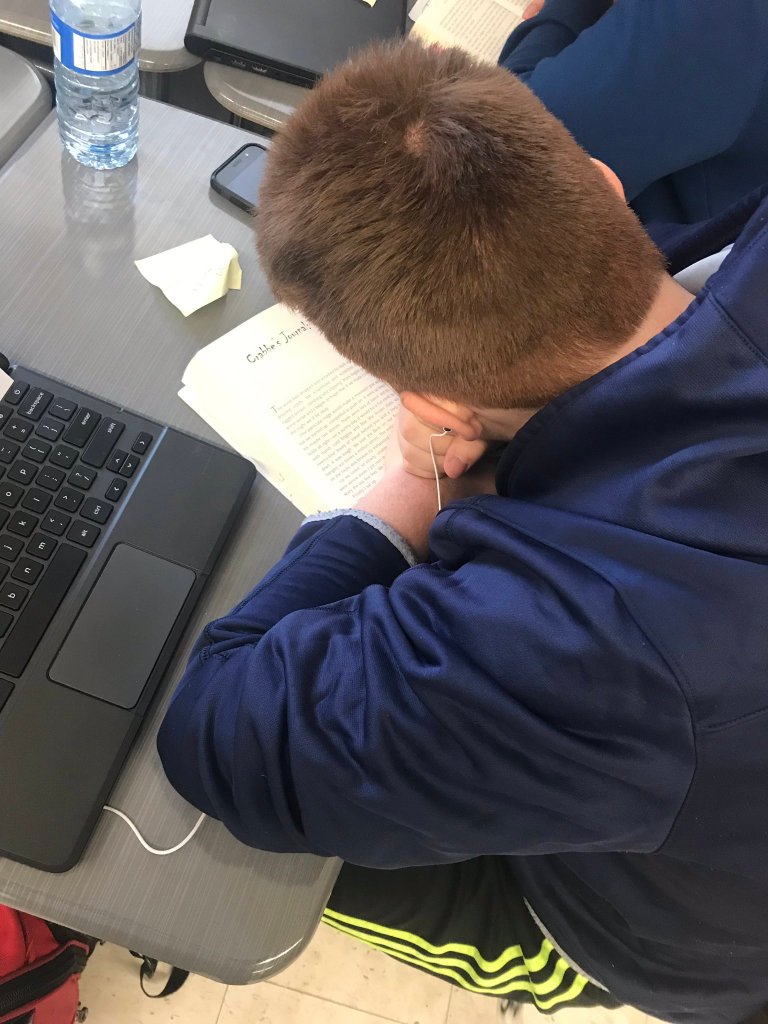Encouraging Secondary Students to Read
When students are reading below their grade level, these different approaches can motivate them to engage with texts and improve their literacy skills.
Your content has been saved!
Go to My Saved Content.As a secondary educator, I’ve traditionally leaned on my elementary counterparts to teach reading skills to students because I always thought that learning how to read is a skill acquired in the early school years. I’ve never viewed my role as one centered on teaching reading, and honestly, I lack the expertise to effectively instruct students in this fundamental skill.
However, more and more, I’ve seen students emerge in my secondary classroom who are reading below grade level, sometimes many grades below their current grade. This has posed a challenge because I’m expected to assist them in mastering the curriculum skills for their current grade, yet their reading proficiency doesn’t align with the expectations for that grade level.
Amid the decline in reading scores observed in Canada and the United States, and with Ontario officially recognizing reading as a human right, it’s imperative for secondary teachers to foster environments where all students can actively participate in reading, regardless of their current proficiency level. This necessitates the creation of inclusive opportunities that cater to students reading below their grade level, ensuring equitable access to literacy resources and support.
I’ve used four strategies that have been successful with my students.
1. Offer a Variety of Reading Materials With Images
It’s helpful to provide a diverse selection of reading materials with images, including books, magazines, and graphic novels. Texts with graphics provide an encouraging gateway for reluctant readers. They see the reading experience as pleasurable and memorable, which makes them more open to reading another text. More important, they also see themselves as readers.
The visual cues that images provide allow for greater understanding of key elements and the ability to engage in high-level thinking. When reading a traditional text, students sometimes struggle with identifying elements such as climax, themes, characters, and setting. The visual cues that texts with graphics offer allow students to become more adept at identifying these elements and learning the content. For example, when a book with black-and-white art suddenly includes an image with red, it cues a reader to a change in the plot.
Here’s a related conversation from my classroom:
“Mrs. Sharma, can you turn to page 46 and look at the character and then look at him on page 47? Why is he changing into an animal?”
Even before I could respond, another student, who was reading below grade level, jumped into the conversation and said, “I think it represents that he doesn’t see himself as a human because he’s realized what he did during the genocide.”
The first student replied by saying, “Oh. So, it shows his loss of humanity. Interesting. Thanks.”
This conversation reveals that texts with images allow students to actively engage in the reading process by thinking, questioning, and wondering. They give students the confidence to participate in conversations about literature so that they can collaborate with their peers to construct meaning. Furthermore, they enable students reading below their grade level to provide support to their peers, thereby encouraging their own confidence.
2. Use Multimedia Resources
You can also incorporate audiobooks, podcasts, and speeches to make reading more dynamic and engaging.
Multimedia resources engage different senses simultaneously, which can help readers absorb information through auditory channels rather than relying solely on text. This multisensory approach can enhance comprehension and retention, particularly for students who struggle with decoding written words. Audiobooks, podcasts, and speeches provide accessible alternatives that remove barriers to comprehension, allowing developing readers to access content that might otherwise be out of reach.

When students are listening to a text, ensure that they have the print book or transcript in order to read along. Reading along with the printed text helps to reinforce the text visually, which allows students to make connections between spoken words and written text. This practice strengthens vocabulary, word recognition, and reading fluency while providing additional support for decoding unfamiliar words. This multisensory approach accommodates different learning needs and cements understanding through dual channels.
3. Scaffold Reading Experiences
Many students who need additional support with reading lack understanding in how to effectively engage with texts. Therefore, it’s crucial for educators to explicitly teach the skills of active reading, empowering students to navigate texts more effectively and comprehend them deeply.
Scaffold support through prereading activities that activate prior knowledge. Then, have students chunk texts into manageable sections, and provide ongoing discussion opportunities during the reading process to reinforce comprehension, encourage critical thinking, and foster a collaborative learning environment. This approach not only helps students navigate challenging texts but also promotes deeper engagement and understanding.
It also helps to make the reading process visible by mapping it out. Learning how to be active readers empowers students to take control of their own learning. It gives them the tools and confidence to tackle challenging texts independently, promoting self-reliance and a sense of achievement.
4. Connect Reading to Real-Life Experiences
Assist students in bridging the gap between their reading material and their personal lives or the world around them by integrating real-life examples and personal anecdotes. By making reading directly relevant to students’ experiences, we can significantly enhance their engagement with the material.
For instance, during my time teaching a grade 11 English class geared toward students with lower reading proficiency, we utilized the driver’s education manual as our primary text. Despite grappling with reading difficulties, this group of students demonstrated remarkable perseverance in overcoming their challenges with reading. Their collective motivation stemmed from a shared desire to obtain their driver’s licenses—highlighting the profound impact of connecting reading material to students’ real-world aspirations.
I’ve observed that students who read below grade level often exhibit reluctance toward reading during class. They’ll play with their phone, go for a long bathroom break, or talk with their classmates in an effort to avoid reading. However, implementing the aforementioned strategies has led to a noticeable shift. I’ve witnessed these students become active participants in discussions about the book by interacting with their peers. This inclusion serves as a motivating factor that ignites their interest in reading. As they become more engaged, their confidence grows, encouraging a willingness to read more frequently. Over time, this increased frequency contributes to stronger reading skills. While the progress in the students’ reading skill level may be modest, the impact is undeniably significant and worthwhile because it nurtures a classroom space where they belong.
